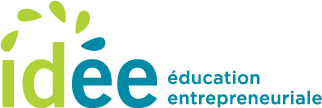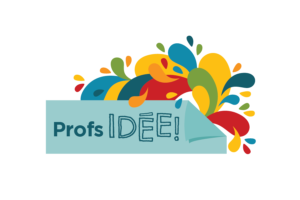L’accompagnement est la clé de voûte au succès d’une transformation réussie de votre école. Offrant un processus rigoureux, méthodique et flexible, nous partons du principe que chaque école est unique et qu’aucune ne part de zéro. Notre équipe personnalise la démarche en fonction de chaque environnement éducatif et de ses besoins pour que votre établissement devienne une école communautaire entrepreneuriale. L’école et sa communauté forment une alliance de sens pour, qu’ensemble, elles portent fièrement leur projet éducatif.
Creativity, the key to reviving the school
*** This article is the first of a series on characteristics of the conscious entrepreneurship exit profile of the Community Entrepreneurship School.
The internationally renowned author and speaker, Sir Ken Robinson, said during his legendary TED conference, that school has probably killed the creativity of young people. If his words are true to some extent, I believe it is this same creativity that will allow the world of education to live again with all its brilliance.
By Jean-Sébastien Reid, deputy executive director
Idée éducation entrepreneuriale
Sir Ken Robinson bases his reflection on the fact that in the early 1900s, school systems were designed to prepare young people for the world of work. It was the time of industrialization and assembly lines, so the school replicated this model by ensuring that young people could conform to it. One can agree on the classification of young people according to the year of production, progress of everyone at the same pace, strict supervision for speaking, etc.
The speaker has also done an assessment on divergent thinking in which he shows that the best performing children on this type of test are kindergarteners. As children progress through life (and school), this ability fades. Divergent thinking is essential to the creative process, because it allows to see situations differently.
BUT WHAT IS CREATIVITY REALLY?
My personal dictionary believes that creativity is the capacity to find a representation or an unedited solution to a problem, a situation or an intention that we have.
- The painter in front of a white canvas.
- A teacher who often has to react in emergency
- A mechanic who has to find the origin of the intermittent sound of a car.
Larousse, for its part, says that creativity is the capacity, faculty of invention, imagination or a creative power.
In both cases, creativity is not directly related to the artistic world, although in our culture we often believe that creativity is mainly limited to artists. There are creators in all areas of life.
That is why I am always surprised to hear a teacher saying he or she is not creative. Every day, teachers have to make a ton of decisions and create solutions from scratch. Their creativity may not be expressed through art, but certainly displayed through their imagination, flexibility and adaptability.
Qualities (5) linked to the creative process
Certain characteristics of creativity facilitate the understanding and development of our creative abilities. In fact, creativity can be learned (and thus can be taught)); it can be developed (and thus there is hope).
- Sensibility : demonstrate listening skills and empathy to seize opportunities
- Originality : put forward a unique or new idea
- Elaboration : improve an existing idea
- Flexibility : see things from multiple points of view
- Fluidity : being able to find many ideas quickly





Since fear kills creativity… how can we overcome it?
In my work, I help and support teachers in the implementation of new educational practices. Sometimes (or often), these new practices require teachers to step out of their comfort zone (or zone of proximal development) since it is something «new» or different from what they usually do.
Every time I face such a situation where teachers freeze in front of this monster of change, I think of Spencer Johnson’s fable Who mooved My Cheese? It is about the reaction certain people may have when confronted with change. Some (the duffle bags) tend to want to close themselves in with their current situation, while others (the bundles) want to explore, convinced that a better situation awaits them elsewhere.
The tips we adopt in our practices and recommend to those who want to get over their fears and start creating are the following:
For the mentor, coach or accompanist
Be comforting, not threatening, like a good old-fashioned shepherd’s pie to those who are afraid to start;
Prove that no one starts at zero. Thus, through examples from the daily life of these teachers, demonstrate that they have been creative in their own way, even if they are not aware of it;
- Advise taking small bites to avoid choking.
- Make sure not to stuff (force things) because the information might come out.
- There is a difference between amazing and blinding the person we want to inspire.
- Adapt our pace to the group. If we go too fast, we will lose them like the field of vision in a car that narrows with increasing speed. Let’s stay accessible.
For the teacher:
- Take inventory of your current/existing practices and become aware of your creative potential.
- Try to remember the delight of finding an idea so you will want to repeat that feeling.
- Take small bites.
- There is no point in running; let’s walk forward.
Creativity to revive school
Nowadays, there is a sense of malaise in the world of education. Teachers are abandoning their profession, recruitment is difficult, young people are difficult, parents are demanding and the bees are dying.
Why the bees?
I think that the world of education, like the bees, has been contaminated by pesticides (negativism, criticism, sarcasm, expectations, workload, etc.). It is therefore important to revitalize the milieu by multiplying good deeds and highlighting them, and by networking in a positive, benevolent and empathetic spirit.
School with capital S can regain its place of prominence in our communities, if we come up with new solutions to the challenges we face in our schools and in our communities in order to create a better world. Let’s spread our wings and those of our children in our schools!
«In order to make the most of our time together on this crowded little planet, we must consciously and rigorously develop our capacity for imagination and creativity[…] we must aim high and be determined to succeed.» – Ken Robinson, The Element (2013)
Other ressources











0 Comment
Would you like to join the discussion? Feel free to contribute!